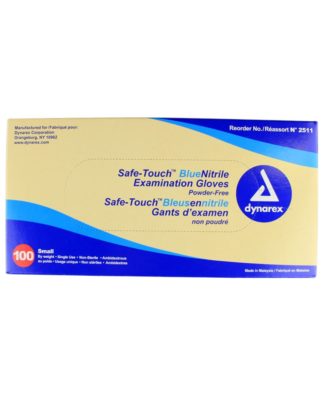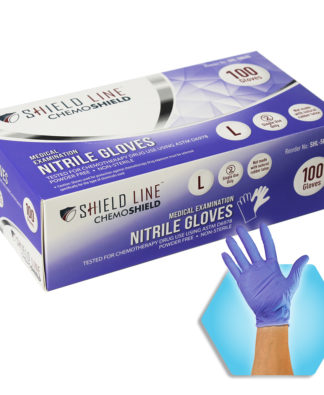Exam Gloves
Gloves offer protection from chemicals, pathogens and body fluids. In addition to hand washing and using hand sanitizer, gloves help keep caregivers and others safe and healthy in many situations. There are generally three types of protective gloves available: latex, vinyl and nitrile.
Latex Gloves
For many years, protective gloves were made from latex, a kind of rubber. These are the most traditional gloves, but they have fallen out of use recently because of allergy concerns. Not only can the person wearing the glove have an allergic reaction to latex, but anyone else who comes into contact with the glove can too. Still, latex gloves are often preferred for excellent comfort, sensitivity and grip in an environment where a reaction is not a concern, but they do not offer good protection against solvents like benzene. Most modern latex gloves are powder-free to eliminate residue, making them appropriate for food prep.
Vinyl Gloves
Gloves made from vinyl contain no latex, are generally lower priced than other options and often fit less snugly than latex or nitrile gloves. These qualities make them appropriate for short-term, high-volume use like food prep. However, vinyl gloves should not be used around hazardous substances or chemicals because the vinyl can break down quickly and expose the wearer to risk. Though allergies to vinyl are rare, some find them uncomfortable due to their loose fit and lack of ventilation, which can cause sweating and minor irritation.
Nitrile Gloves
The full name of the synthetic material that nitrile gloves are made from is acrylonitrile-butadiene rubber. These have become popular protective gloves in many industries for three reasons: they have very low allergy rates, they are highly resistant to many chemicals and they are generally affordable. One key safety feature in nitrile gloves is that it is easy to see when they have been compromised because they tear when punctured. By contrast, a latex glove may remain intact when punctured, possibly exposing the wearer to undue risk when performing tasks like administering a suction catheter.
Showing all 2 results
Showing all 2 results


